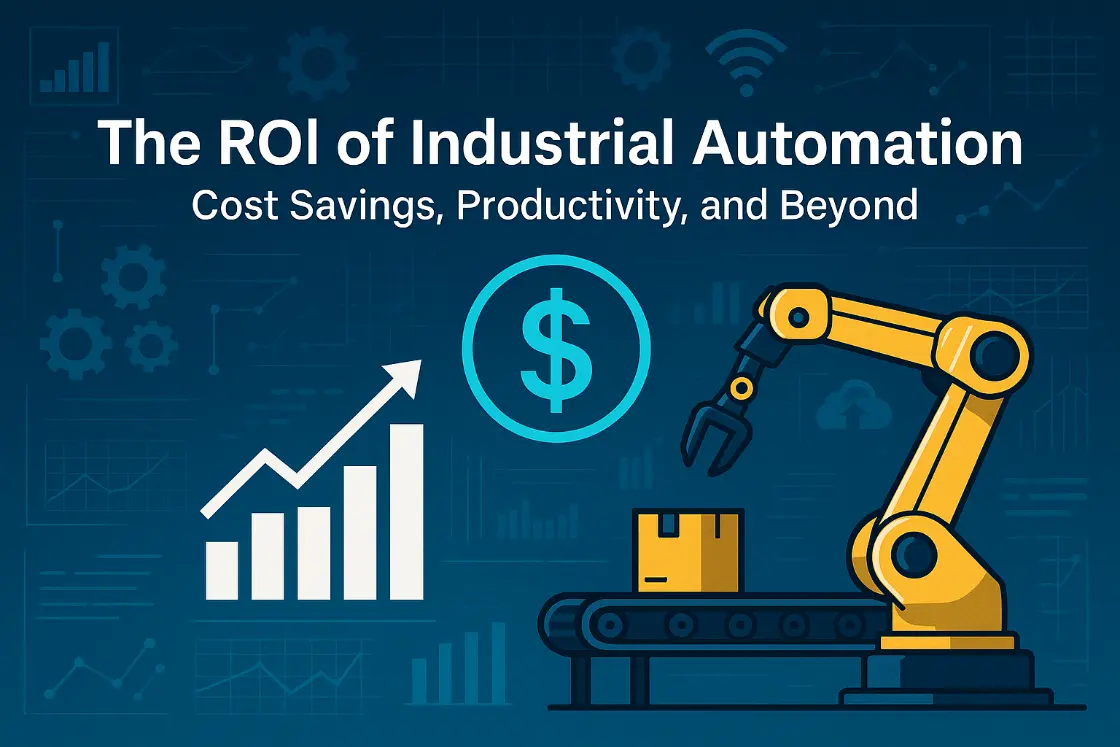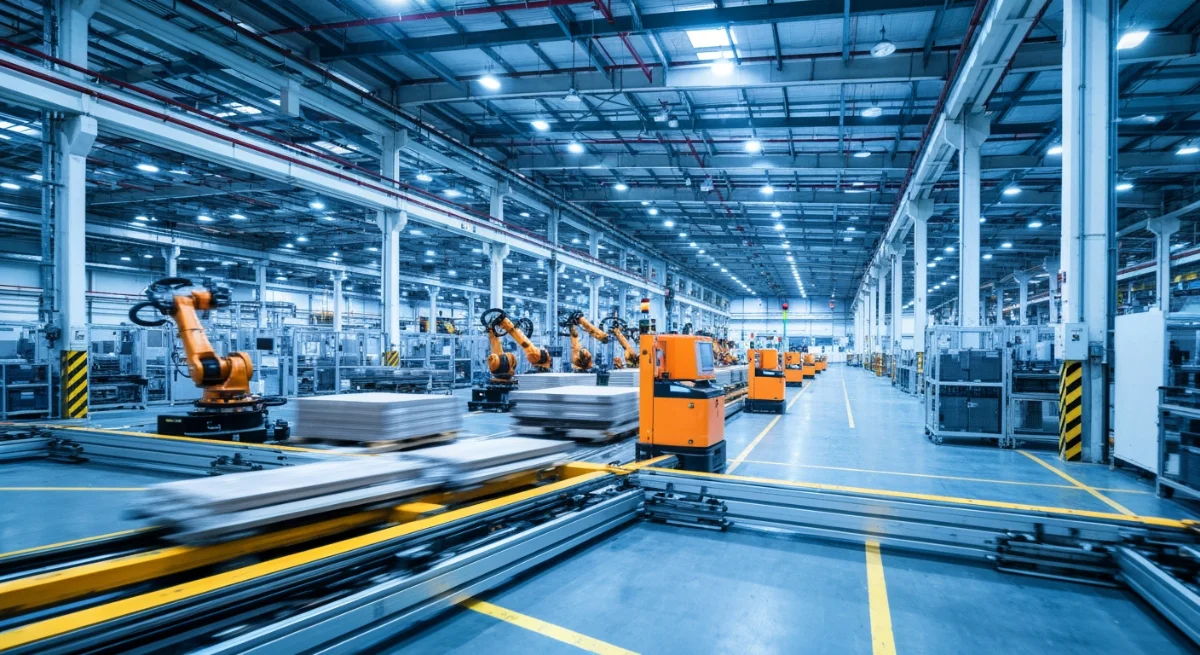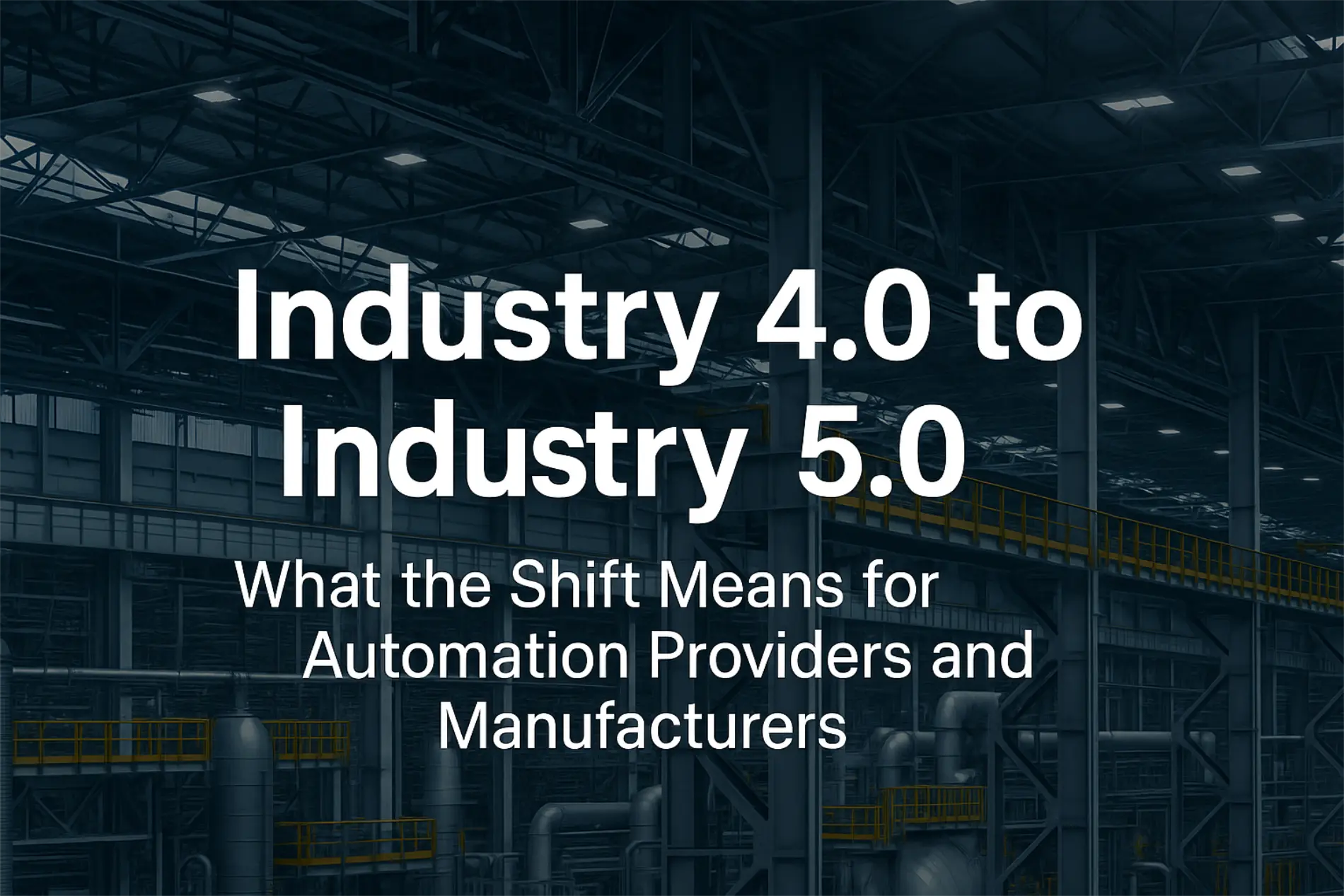Industrial automation is changing the way manufacturing works. By using advanced technologies like PLCs, robotics, and SCADA systems, it makes processes more efficient and precise.
In today’s fast-paced industrial world, automation is crucial for businesses to stay competitive and sustainable. It helps them respond quickly to market demands, maintain high product quality, and adapt to changing consumer preferences.
When considering investments in automation, understanding the Return on Investment (ROI) is essential. It reveals the financial benefits and long-term advantages that automation can bring.
This article explores how industrial automation can lead to significant cost savings and increased productivity for organizations. Through real-life examples, data-driven insights, and practical tips for calculating ROI, readers will gain a comprehensive understanding of the transformative power of automation projects.
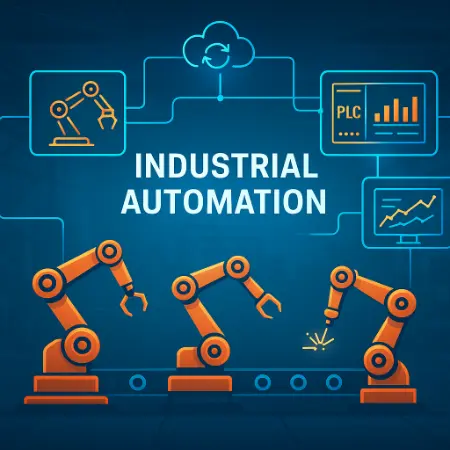
What is Industrial Automation
Defining Industrial Automation
Industrial automation refers to the use of various control systems such as Programmable Logic Controllers (PLCs), robotics, and Supervisory Control and Data Acquisition (SCADA) systems to operate different types of machinery and processes in manufacturing facilities. These systems are designed to perform tasks with minimal human intervention, increasing efficiency, accuracy, and safety in industrial operations.
Overview of Automation Types and Applications
1. Programmable Logic Controllers (PLCs):
PLCs are specialized digital computers used to control manufacturing processes such as assembly lines, robotic devices, or any activity that requires high reliability control and ease of programming. They are essential in streamlining production processes, monitoring inputs/outputs, and automating repetitive tasks.
2. Robotics:
Industrial robots are programmable machines that can perform a variety of tasks such as welding, painting, palletizing, picking, and packing. They enhance productivity by executing tasks with precision and speed while ensuring worker safety in hazardous environments.
3. SCADA Systems:
SCADA systems monitor and control industrial processes that involve complex systems spread out over large areas. They collect real-time data from sensors and equipment, allowing operators to visualize processes, detect issues early, and make informed decisions for optimal performance.
Typical Business Applications
Industrial automation finds applications across various industries including:
- Automotive: Automation is used in car manufacturing plants for tasks like welding, painting, and assembly.
- Food and Beverage: Automated packaging lines ensure efficiency in food processing plants.
- Pharmaceuticals: Automation streamlines drug manufacturing processes for accuracy and compliance.
- Electronics: Robotics play a crucial role in assembling intricate electronic components with high precision.
By leveraging industrial automation technologies tailored to specific business needs, companies can enhance operational efficiency, quality control, and overall competitiveness in the market.
The Components of ROI in Industrial Automation
Industrial automation delivers measurable returns through distinct components that directly impact your bottom line. Understanding these elements helps you evaluate how automation drives value beyond just initial investment costs.
Cost Savings
Automation reduces expenses by cutting down manual labor requirements and minimizing human error. Systems like programmable logic controllers (PLCs) and robotics streamline repetitive tasks, lowering wage costs and employee-related overhead such as training and benefits. Automated processes also optimize resource use, preventing material waste and reducing scrap rates. Additionally, automation can decrease maintenance expenses by enabling predictive maintenance schedules that avoid costly breakdowns.
Productivity Gains
Automated systems operate continuously with consistent speed and precision, significantly increasing throughput compared to manual methods. You can scale production more easily to meet rising demand without proportional increases in workforce size. Technologies such as SCADA (Supervisory Control and Data Acquisition) provide real-time monitoring and control across operations, allowing rapid adjustments that keep processes running at peak efficiency. Higher equipment utilization rates and shorter cycle times translate directly into improved productivity metrics.
Quality Improvements
Consistent product quality is a critical factor in customer satisfaction and cost control. Automation eliminates variability caused by human factors, delivering repeatable manufacturing conditions that reduce defects and rework. Precision robotics handle delicate assembly or inspection tasks with accuracy unachievable manually. Automated quality control systems can detect deviations early, ensuring only products meeting strict specifications reach the market. This leads to fewer returns, warranty claims, and reputational risks tied to poor quality.
Each component—cost savings, productivity gains, quality improvements—interlocks to form the comprehensive ROI picture for industrial automation investments. Recognizing these drivers clarifies why companies investing in automation often see substantial financial benefits alongside operational enhancements.
The Financial Benefits of Industrial Automation
Industrial automation delivers tangible financial benefits that directly impact your bottom line. Understanding these advantages helps you justify investments and tailor solutions to your specific operational needs.
1. Labor Cost Reduction
One of the most immediate financial benefits of industrial automation is the reduction in labor costs. Automated systems take over repetitive, manual tasks that traditionally require significant human intervention. This minimizes:
- Overtime expenses
- Human error-related costs
- Training and recruitment expenditures
By reallocating your workforce from routine operations to higher-value activities, you optimize labor efficiency without compromising output quality.
2. Increased Production Capacity
Automation enables manufacturers to scale production quickly and reliably. Systems such as programmable logic controllers (PLCs) and robotic assembly lines work continuously with minimal downtime, allowing you to:
- Meet growing market demands efficiently
- Shorten production cycles
- Boost throughput without proportional increases in labor or facility expansion
Increased capacity translates into higher revenue potential while maintaining control over operational expenses.
3. Quality Improvement
Consistent, high-quality output is a strong driver of customer satisfaction and brand reputation. Automation achieves this by:
- Standardizing manufacturing processes
- Reducing variability caused by human factors
- Enabling real-time monitoring and immediate adjustments
Fewer defects lead to lower rework and scrap rates, reducing material waste and increasing yield—two critical contributors to cost savings.
4. Reduced Maintenance Costs
Automated systems often incorporate predictive maintenance technologies that monitor equipment health continuously. These capabilities allow you to:
- Detect issues before they cause unplanned downtime
- Schedule maintenance proactively during planned windows
- Extend the lifespan of machinery through timely interventions
Preventing breakdowns lowers repair costs and maintains steady production flow, protecting revenue streams from unexpected interruptions.
5. Energy Optimization
Smart automation technologies can also optimize energy consumption across operations. By integrating sensors and advanced control algorithms, you gain the ability to:
- Adjust energy usage dynamically based on workload demands
- Identify inefficiencies and eliminate wasteful practices
- Implement energy-saving modes without affecting productivity
Energy cost reductions contribute directly to improved profit margins while supporting sustainability goals.
These financial benefits of industrial automation combine to create a powerful case for investment. Each element—from labor cost reduction to energy optimization—plays a crucial role in enhancing operational efficiency and maximizing return on investment.
Real-Life Examples of Successful Industrial Automation Investments
Examining case studies on industrial automation ROI provides valuable insights into how automation drives tangible business outcomes. These real-life examples of successful automation projects highlight key benefits such as increased productivity, cost savings, and operational efficiency. According a study by Mitsubishi, they achieve a postive ROI for every automation project they conducts.
1. Company A: Automotive Industry Robotics Integration
A leading automotive manufacturer integrated an advanced robotics system directly into their assembly line. This automation upgrade achieved a 30% increase in production output by accelerating assembly processes and reducing bottlenecks. The investment recouped its costs within 18 months, demonstrating a rapid payback period. Robotics not only enhanced speed but also improved safety by handling repetitive and hazardous tasks, allowing human workers to focus on quality control and complex operations.
2. Company B: Automated Packaging in Food Processing
A food processing company implemented an automated packaging solution that revolutionized their end-of-line operations. This system significantly reduced labor costs by 25% due to less reliance on manual packing work while maintaining high throughput levels. Improvements in packaging precision led to enhanced product quality and minimized waste, strengthening brand reputation. The project delivered a substantial ROI within two years, confirming the financial viability of investing in automation for routine yet critical tasks.
3. Company C: Predictive Maintenance through Machine Learning
A pharmaceutical manufacturer utilized machine learning algorithms for predictive maintenance across their production equipment. This innovation resulted in a 40% reduction in unplanned downtime, safeguarding continuous operations and mitigating costly disruptions. The predictive system identified early signs of wear or failure, enabling timely interventions before breakdowns occurred. This approach accelerated the return on investment by lowering maintenance expenses and maximizing asset utilization.
These examples demonstrate how targeted automation initiatives can drive measurable improvements across various industries. You can leverage similar strategies tailored to your operational needs to unlock comparable benefits in cost efficiency and productivity gains.
Calculating the ROI of Industrial Automation Projects
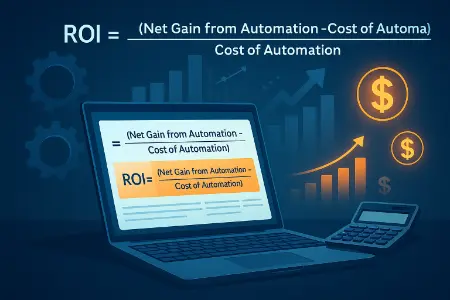
Understanding tips for calculating ROI in industrial automation investments is crucial when planning your next automation project. The ROI of Industrial Automation: Cost Savings, Productivity, and Beyond extends past simple financial figures. Accurate calculation helps justify investments and guides strategic decisions.
1. Identifying Key Metrics
Selecting the right metrics provides clarity on how automation impacts your bottom line:
- Payback Period: Measures how long it takes to recover the initial investment from cost savings and increased revenue.
- Net Present Value (NPV): Calculates the present value of future cash flows generated by the automation project, helping you understand profitability over time.
- Internal Rate of Return (IRR): Represents the expected annualized return from the investment, useful for comparing multiple projects.
These metrics offer a quantitative foundation to assess whether an automation initiative will deliver sustainable financial benefits.
2. Considering Non-Financial Benefits
Not all returns show up directly on your balance sheet. Factoring in non-monetary advantages strengthens the ROI case:
- Improved Workplace Safety: Automation reduces exposure to hazardous conditions, lowering injury-related costs and boosting employee morale.
- Enhanced Product Consistency: Automated processes minimize variability, leading to fewer defects and better customer satisfaction.
- Increased Customer Satisfaction: Reliable quality and faster delivery times build stronger client relationships and can drive repeat business.
Acknowledging these intangible benefits ensures a more comprehensive evaluation of how automation transforms operations beyond dollars saved.
3. Engaging Stakeholders
Calculating ROI involves cross-functional collaboration to capture all relevant impacts:
- Operations teams provide insights into process improvements and labor efficiencies.
- Finance professionals validate cost structures and forecast financial outcomes.
- IT experts assess technology integration challenges and maintenance implications.
Engaging diverse stakeholders aligns project goals with organizational priorities, making your ROI assessment both robust and actionable. This collaborative approach reveals hidden value drivers that might otherwise be overlooked.
Applying these strategies gives you a well-rounded perspective on industrial automation investments, empowering you to make informed choices that maximize both cost savings and productivity gains.
Overcoming Barriers to Investment
Industrial automation investments often face hesitation due to several common concerns. Understanding these barriers helps you address them effectively and move forward with confidence.
Common Concerns and Misconceptions
- Cost: Upfront expenses for automation technology can seem high. This includes hardware, software, integration, and training.
- Complexity: Fear of complicated implementation processes and the need for specialized skills to manage automated systems.
- Downtime: Worries about production halts during installation or transition phases that could disrupt operations.
These concerns are valid but manageable with the right approach.
Strategies to Mitigate Risks and Maximize Returns
- Phased Implementation: Start small with pilot projects to test automation benefits without committing large resources immediately. This reduces risk and builds internal expertise gradually.
- Vendor Partnerships: Collaborate closely with experienced automation providers like Twilight Automation, who offer tailored solutions and support throughout deployment.
- Training Programs: Invest in workforce upskilling to ease the transition and empower your team to operate and maintain new technologies confidently.
- Predictive Planning: Use detailed project timelines and contingency plans to minimize downtime and maintain operational continuity.
- ROI Monitoring: Continuously track performance metrics against projections to identify issues early and adjust strategies for optimal returns.
Addressing these barriers strategically ensures your automation investment delivers measurable cost savings, productivity improvements, and long-term value.
Start Benefiting from Automation Today
Embracing industrial automation is not just a short-term upgrade; it is a strategic choice of industrial automation investments that drives sustainable growth. You gain:
- Significant cost savings through reduced labor, maintenance, and energy expenses
- Enhanced productivity by boosting output and operational efficiency
- Improved quality and consistency, elevating customer satisfaction and brand reputation
Understanding The ROI of Industrial Automation: Cost Savings, Productivity, and Beyond prepares you to make informed decisions that amplify your competitive edge. Investing in automation today positions your business for long-term success in an evolving manufacturing landscape. Take the step toward smarter operations and measurable returns now.

